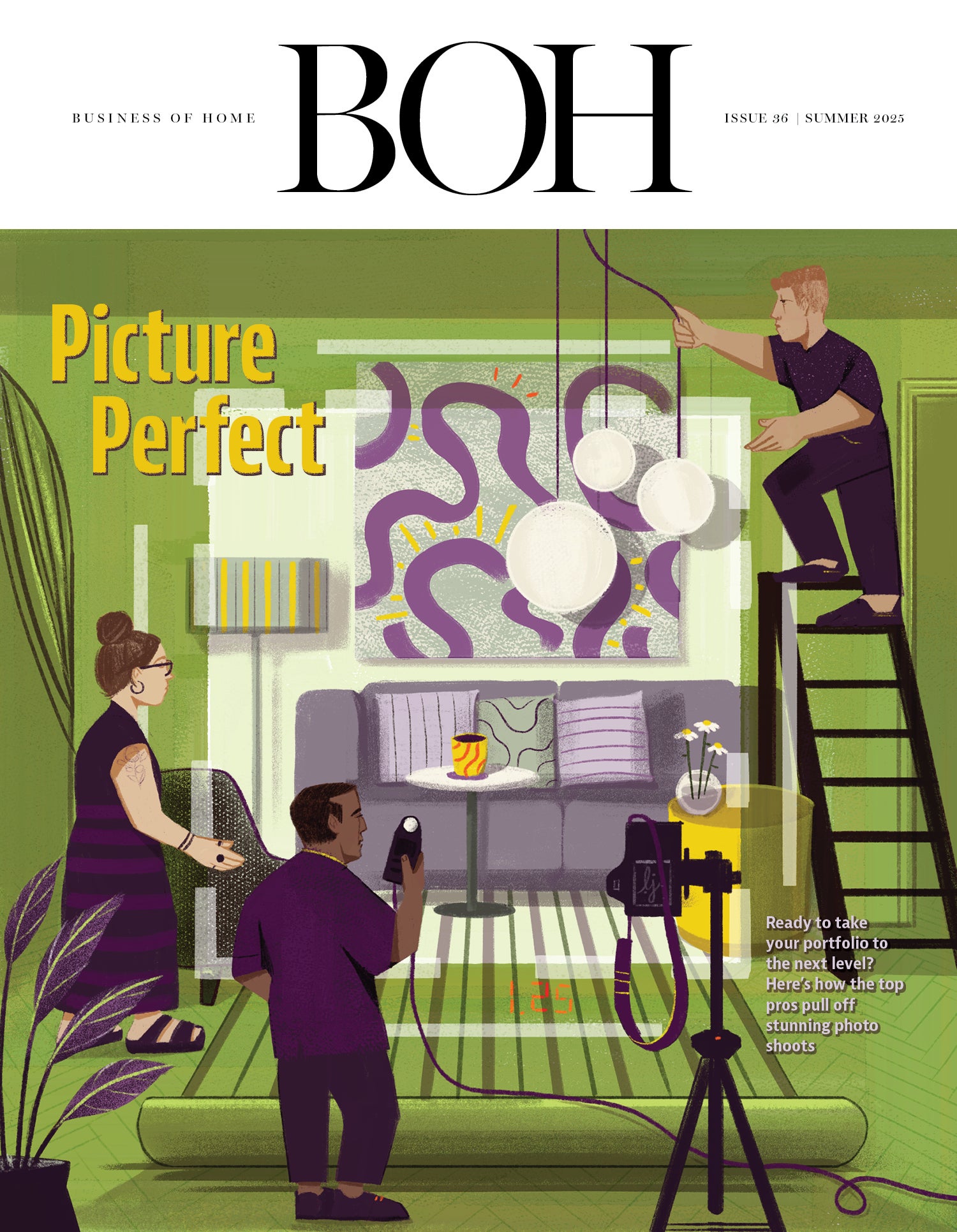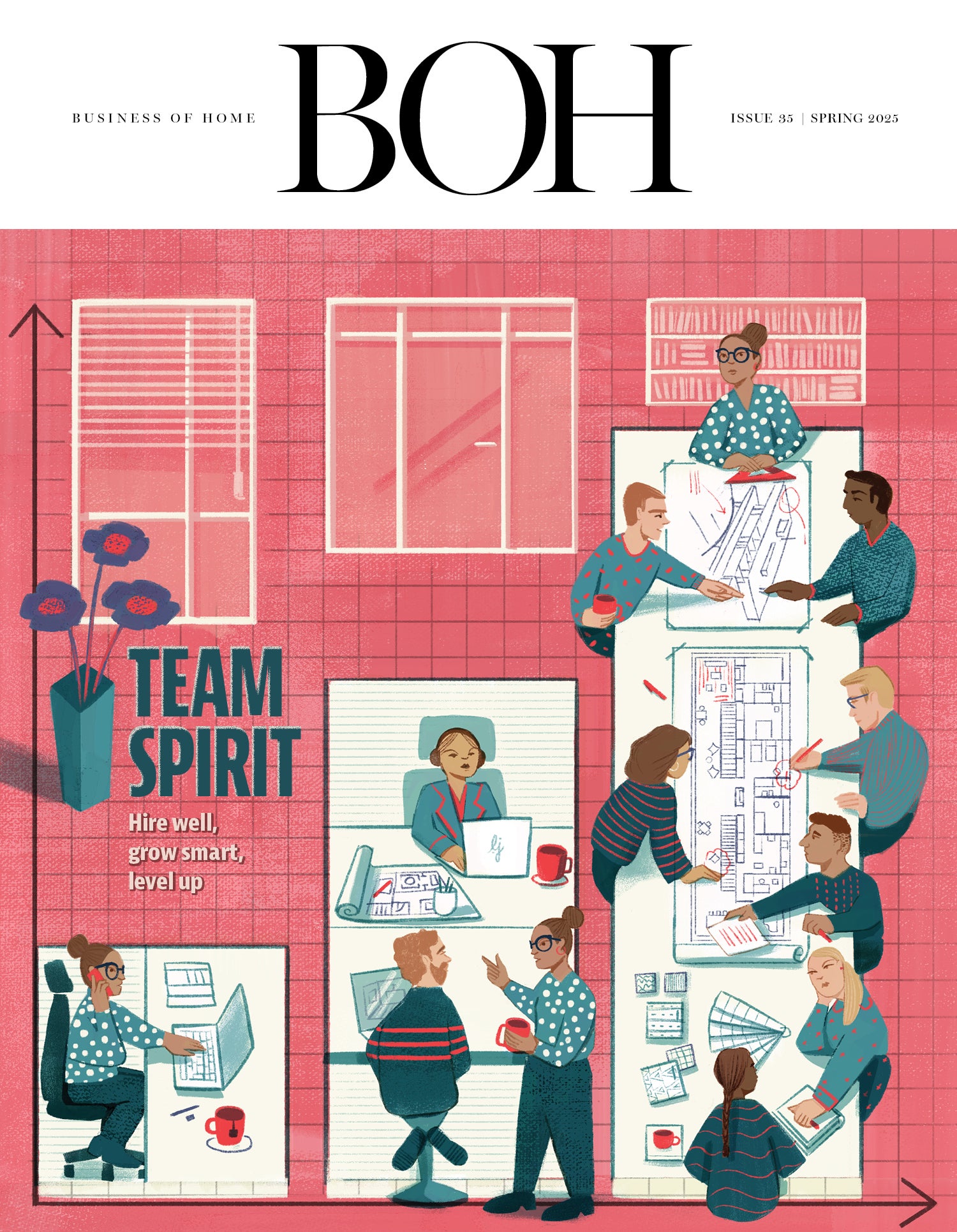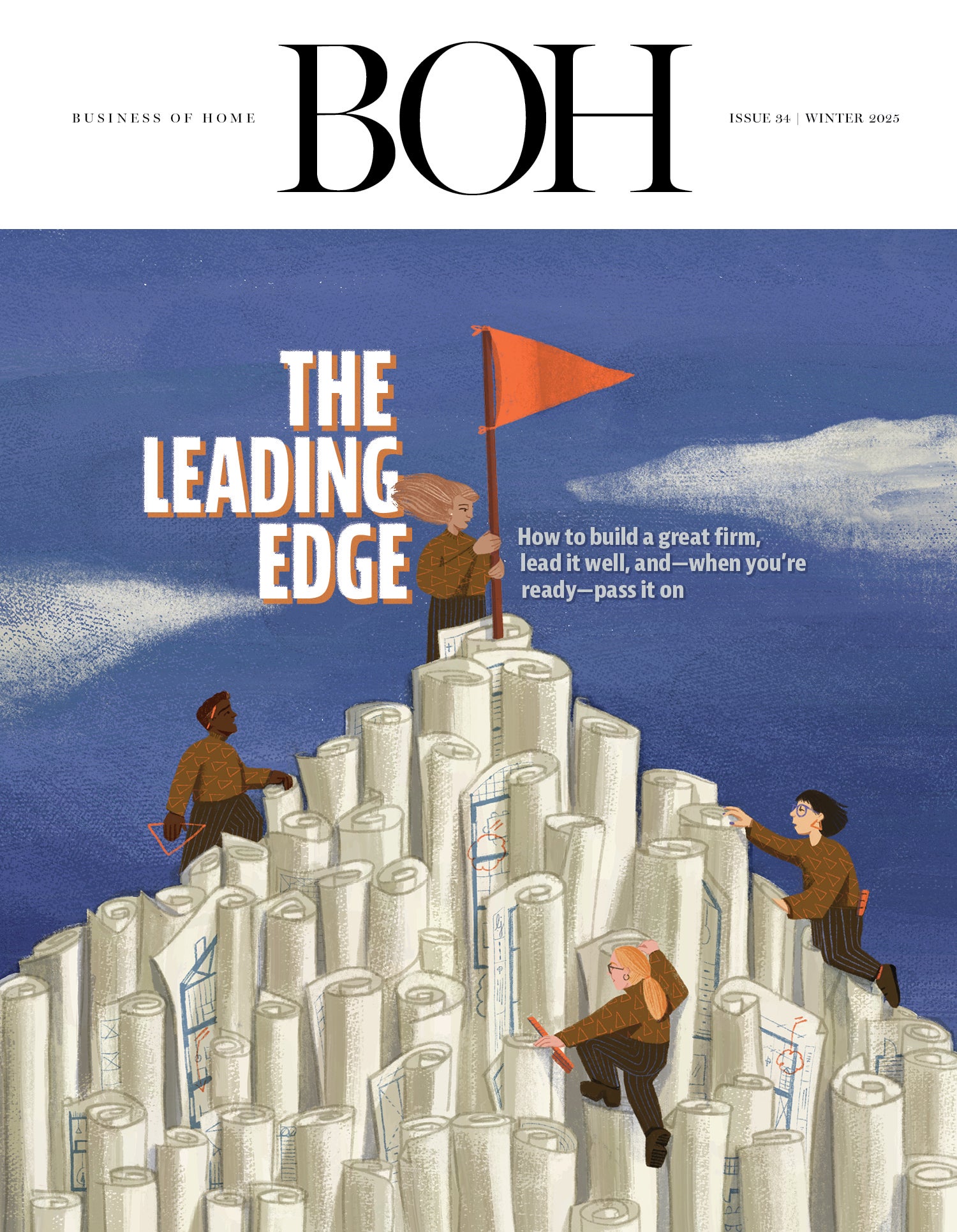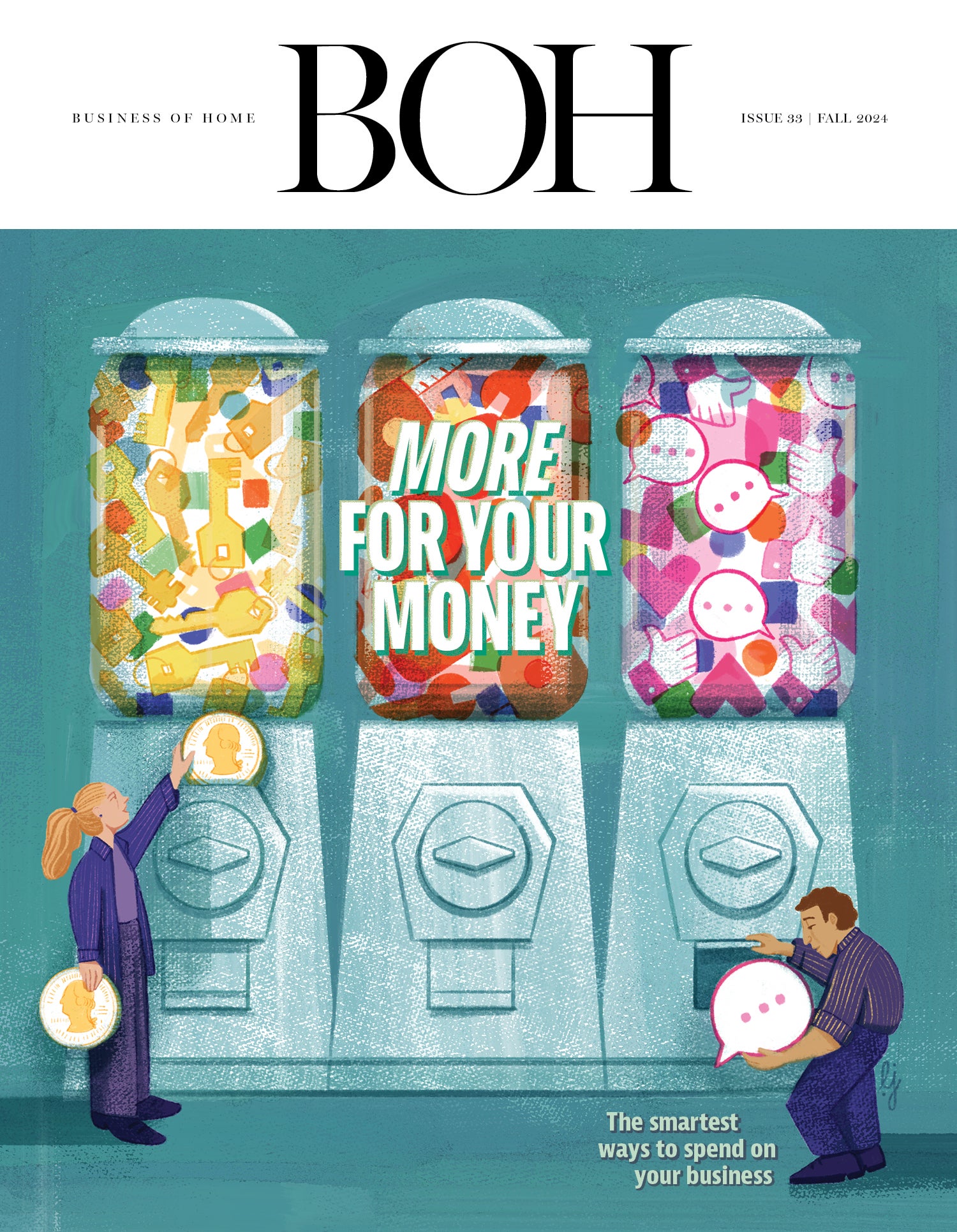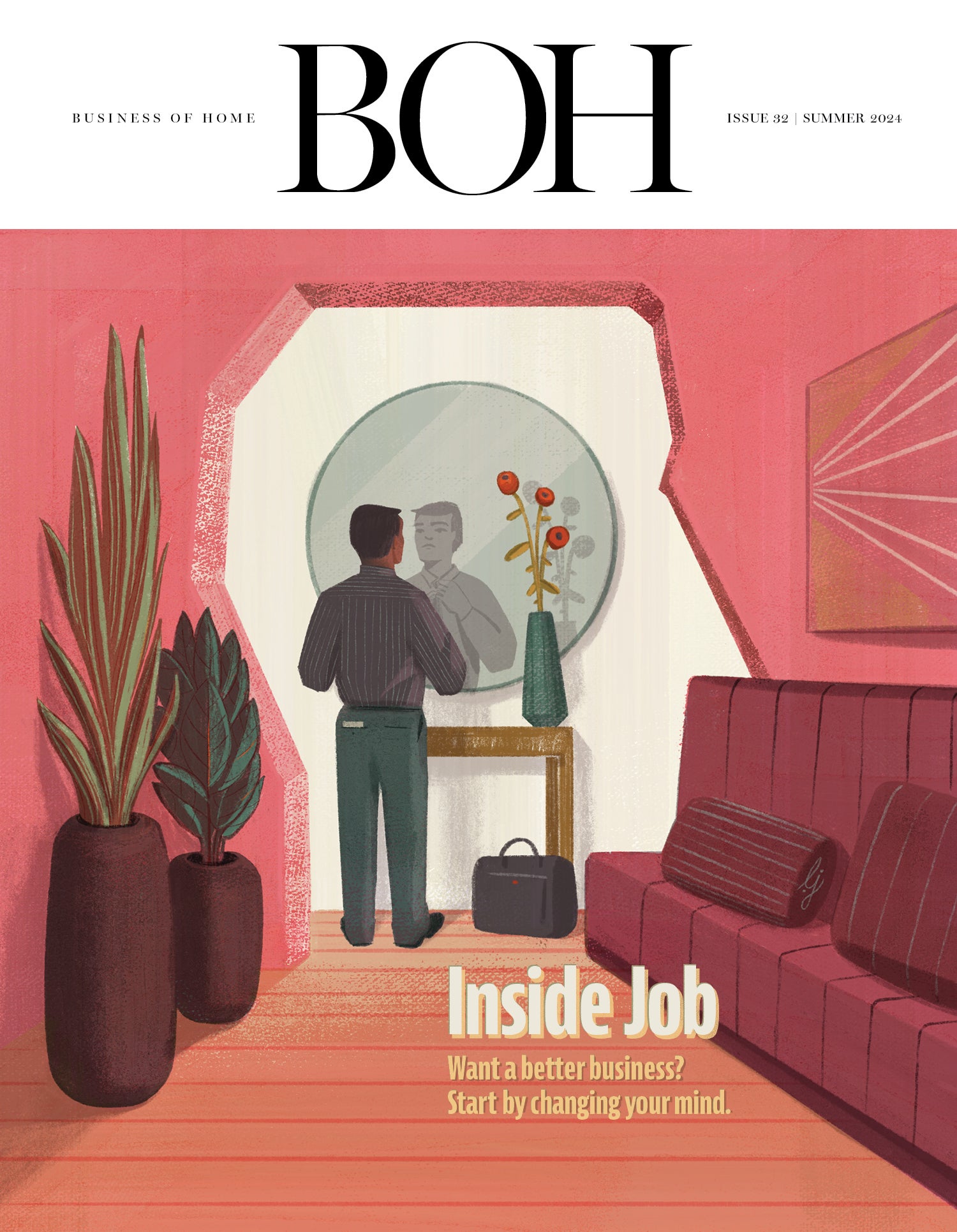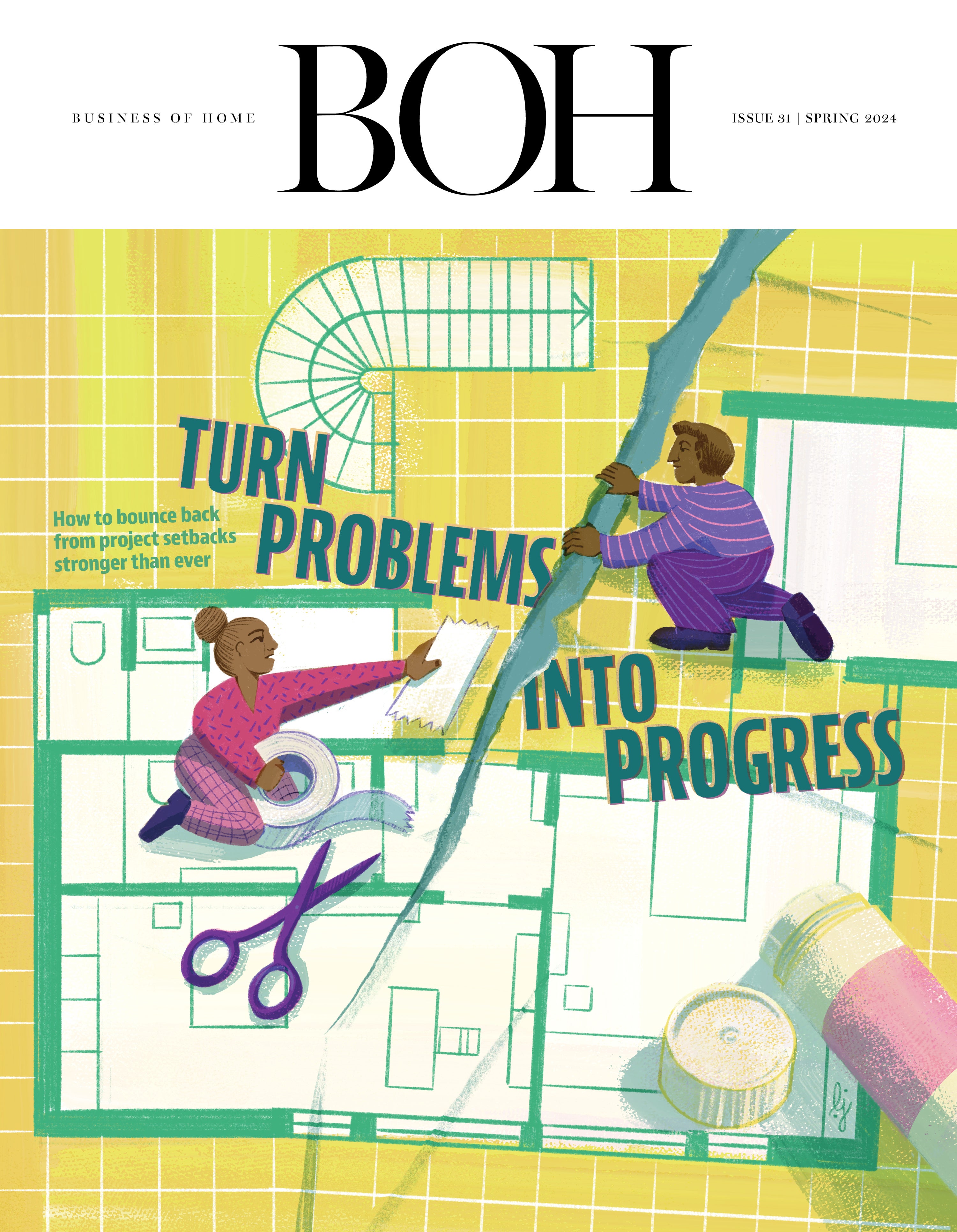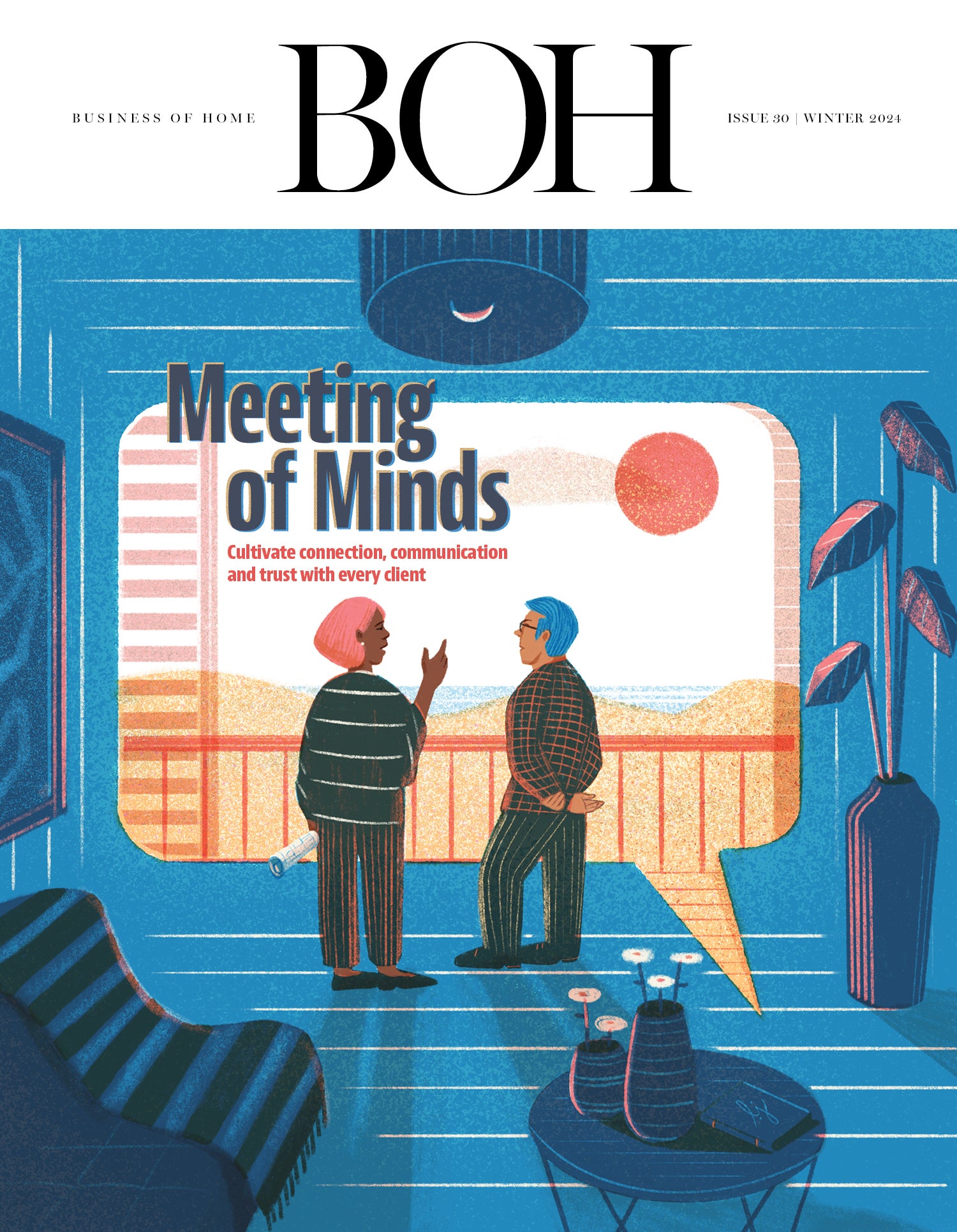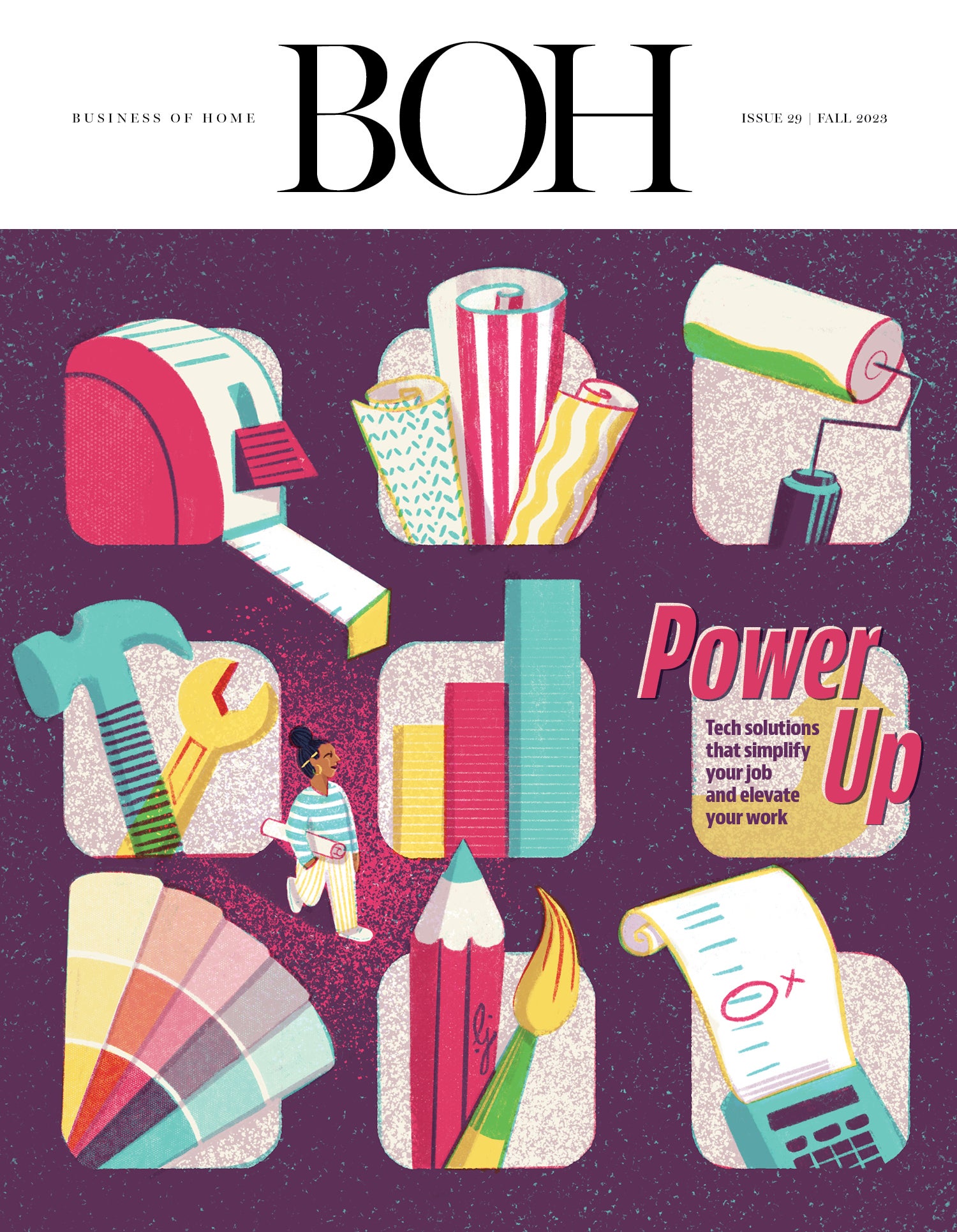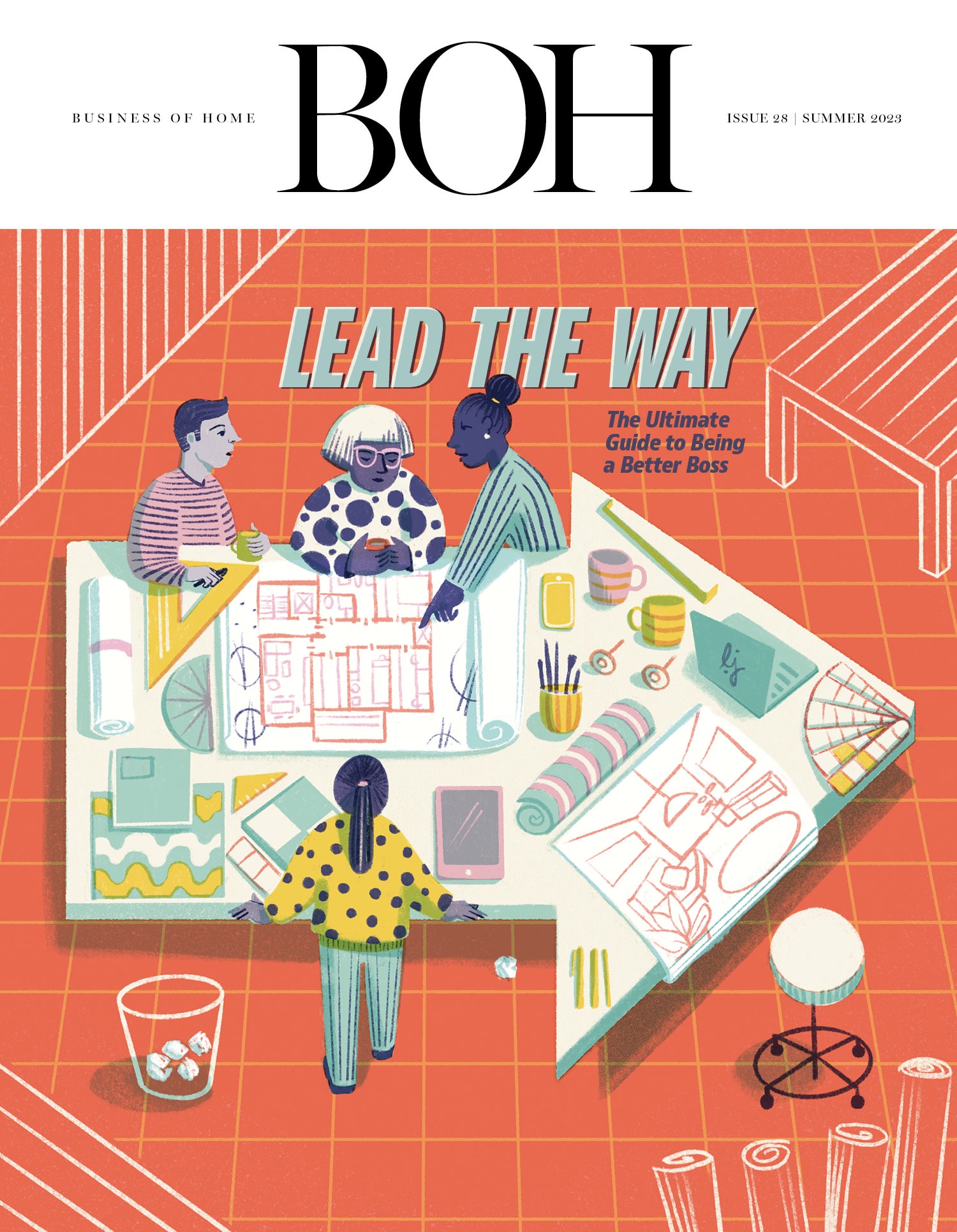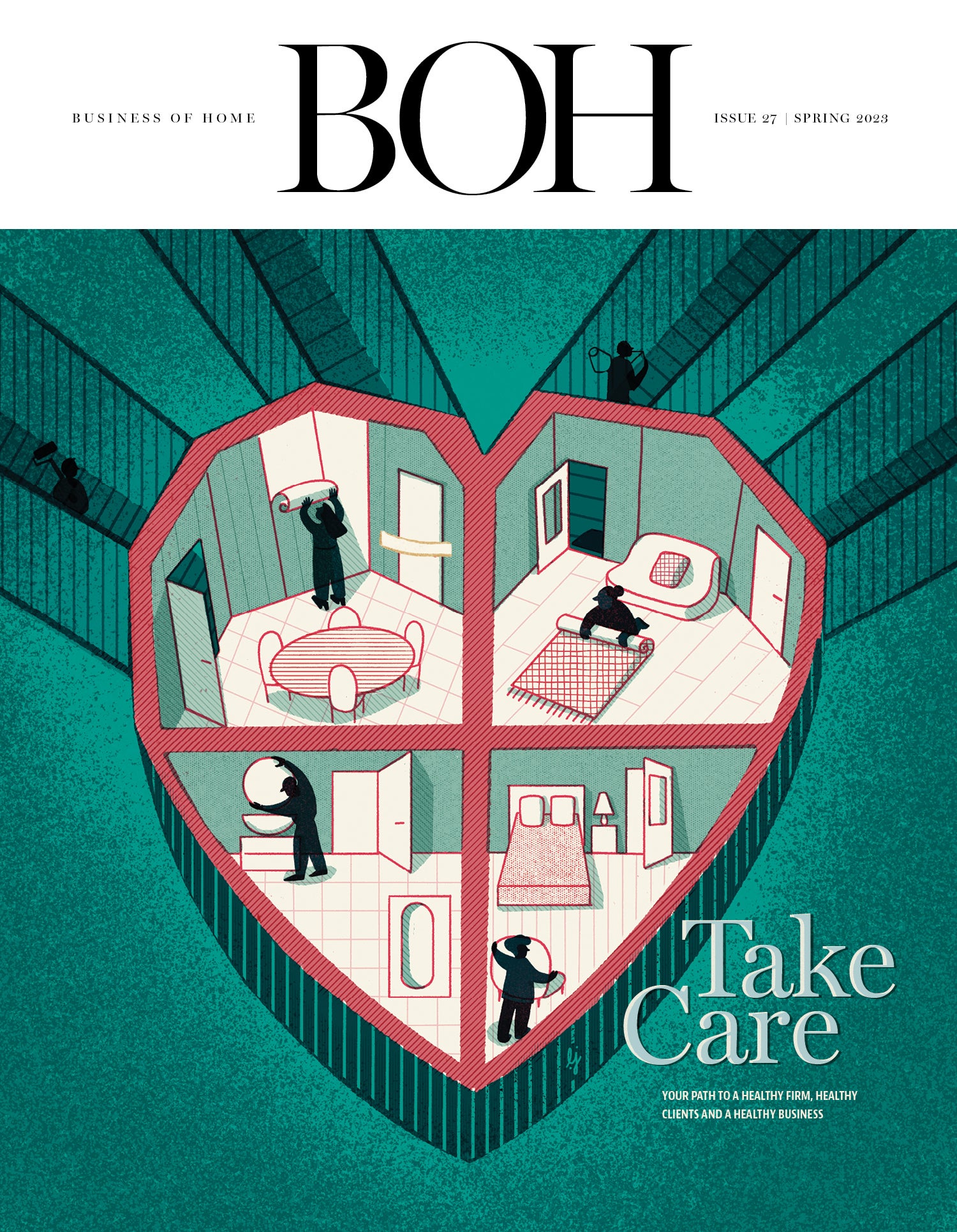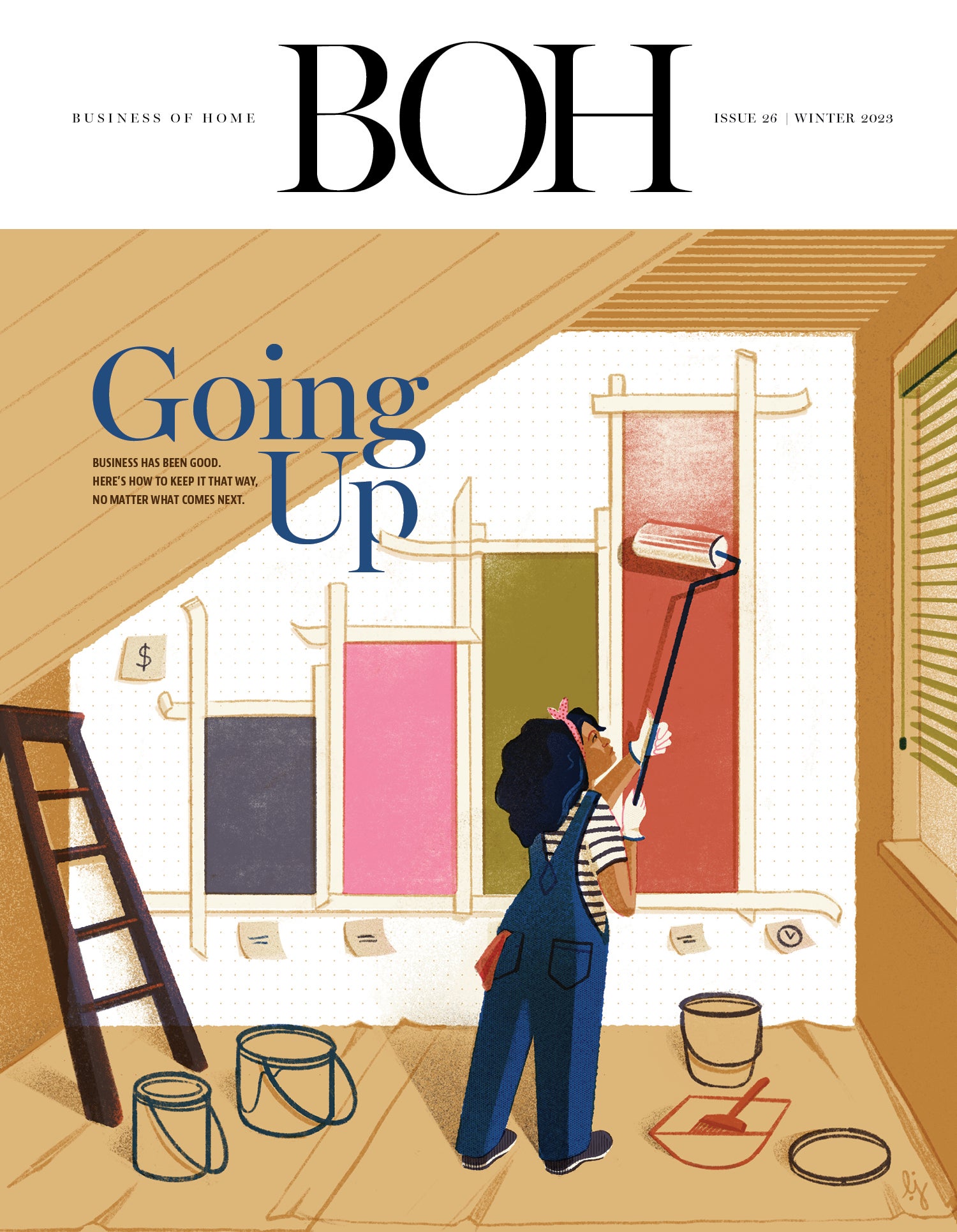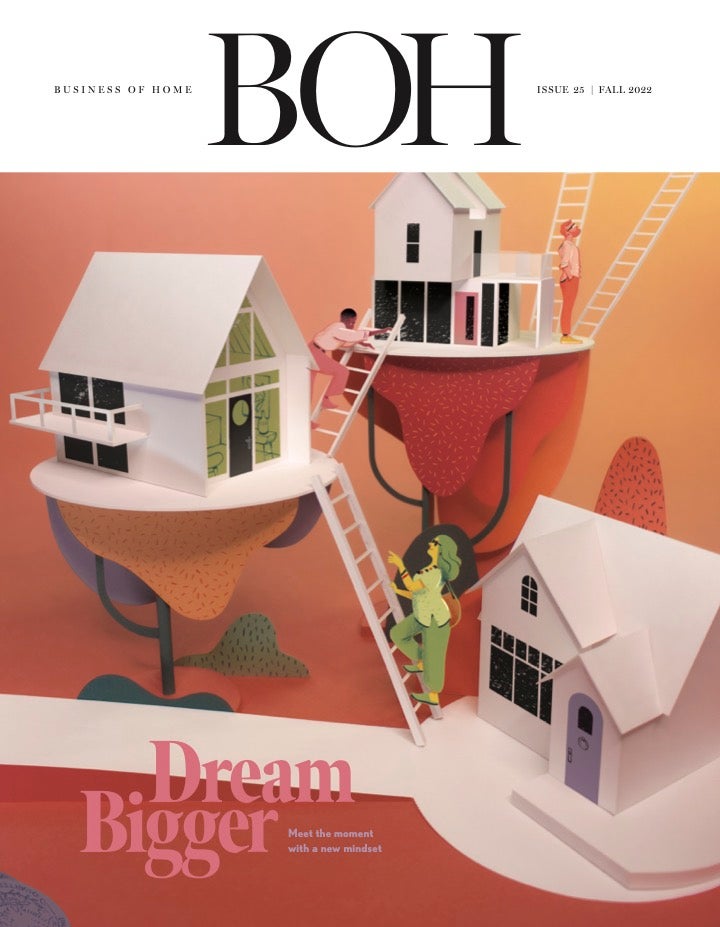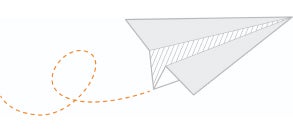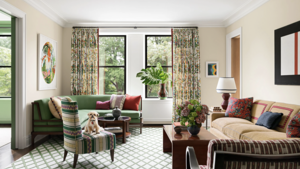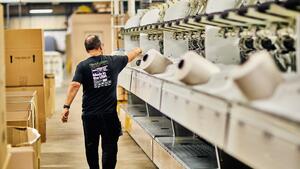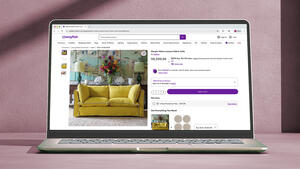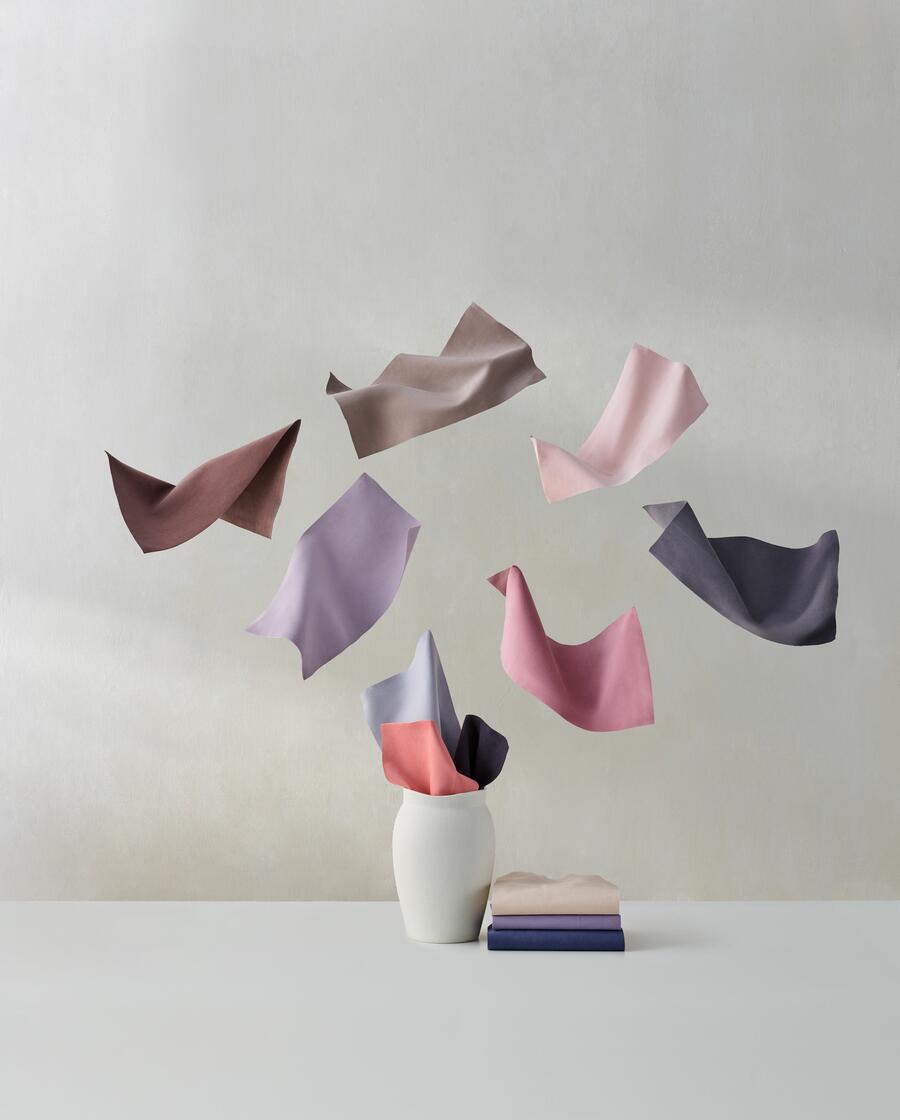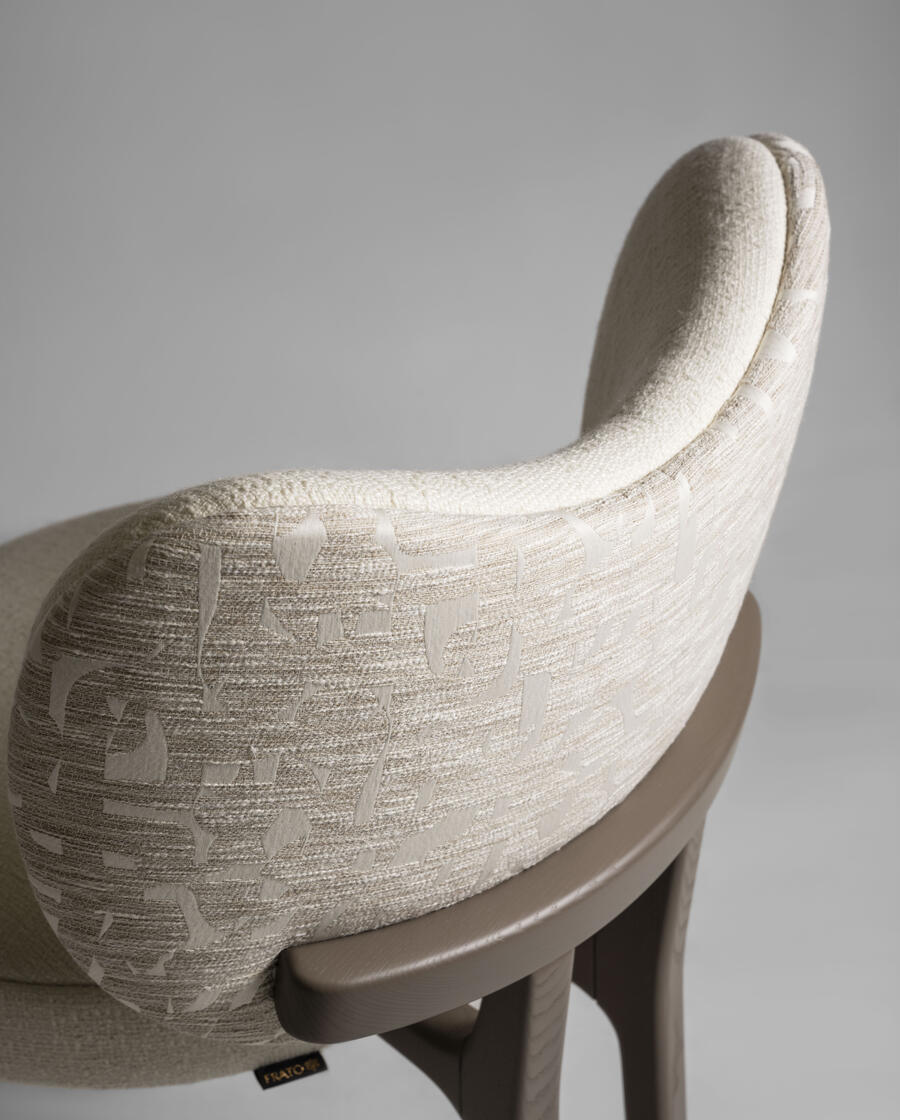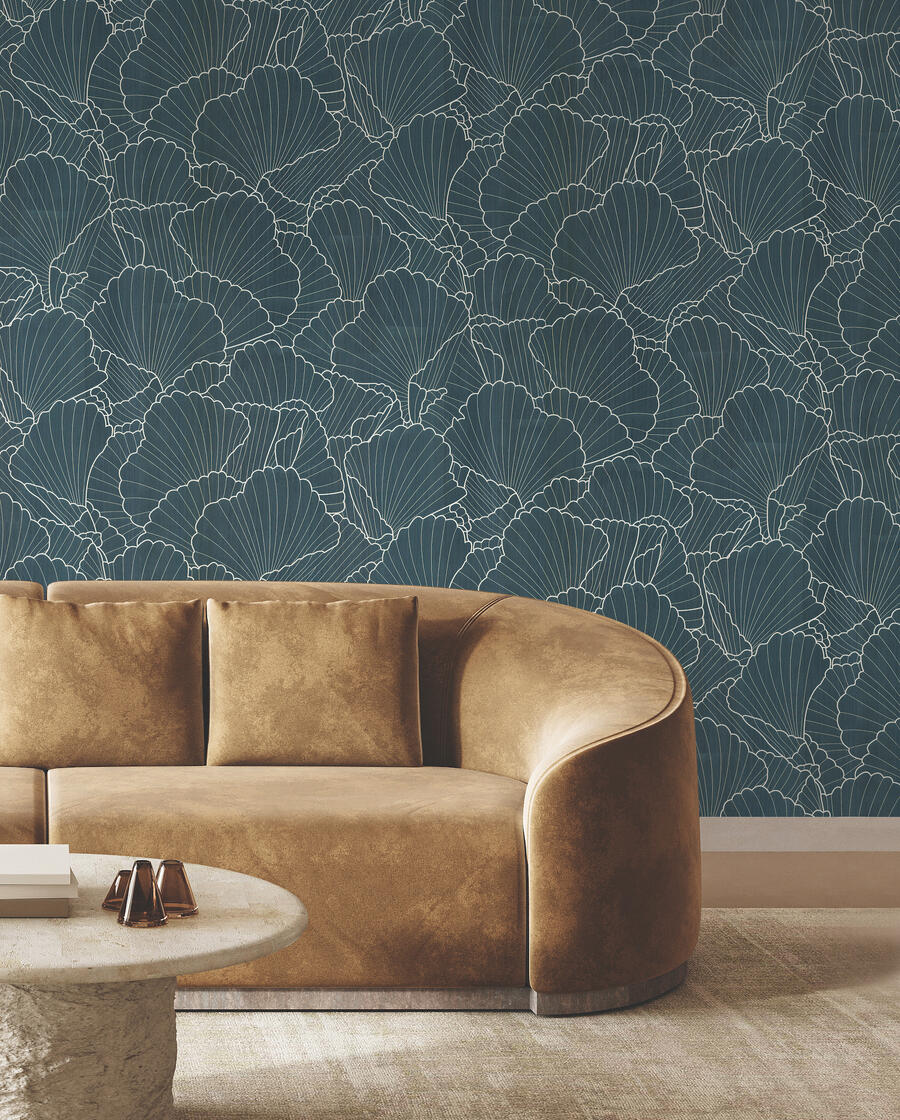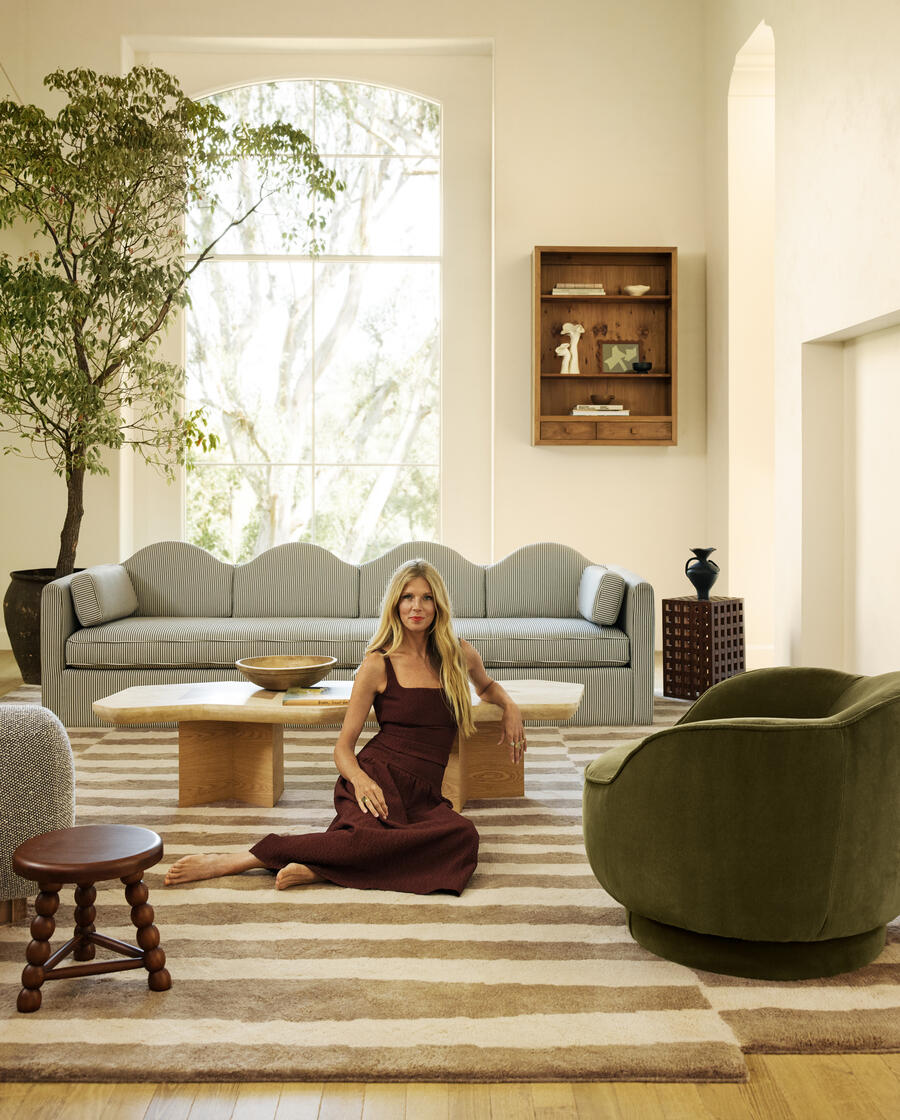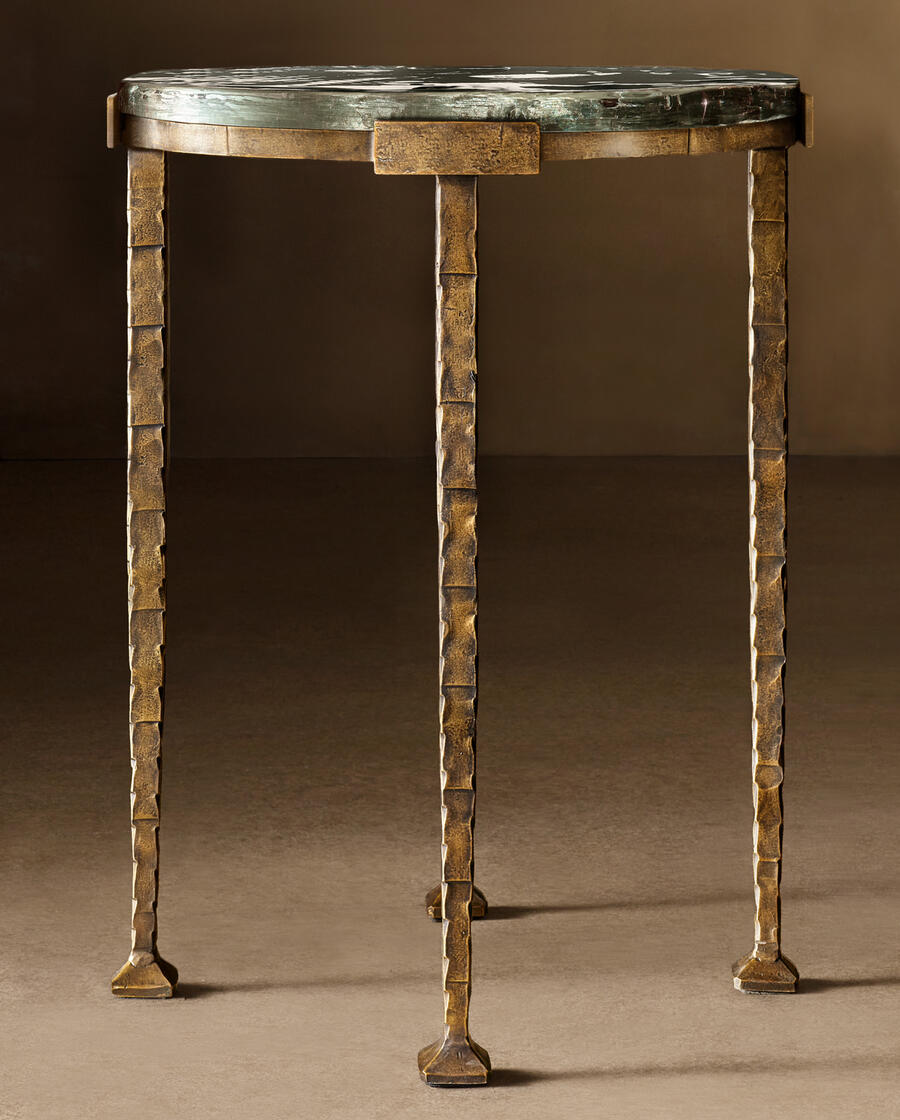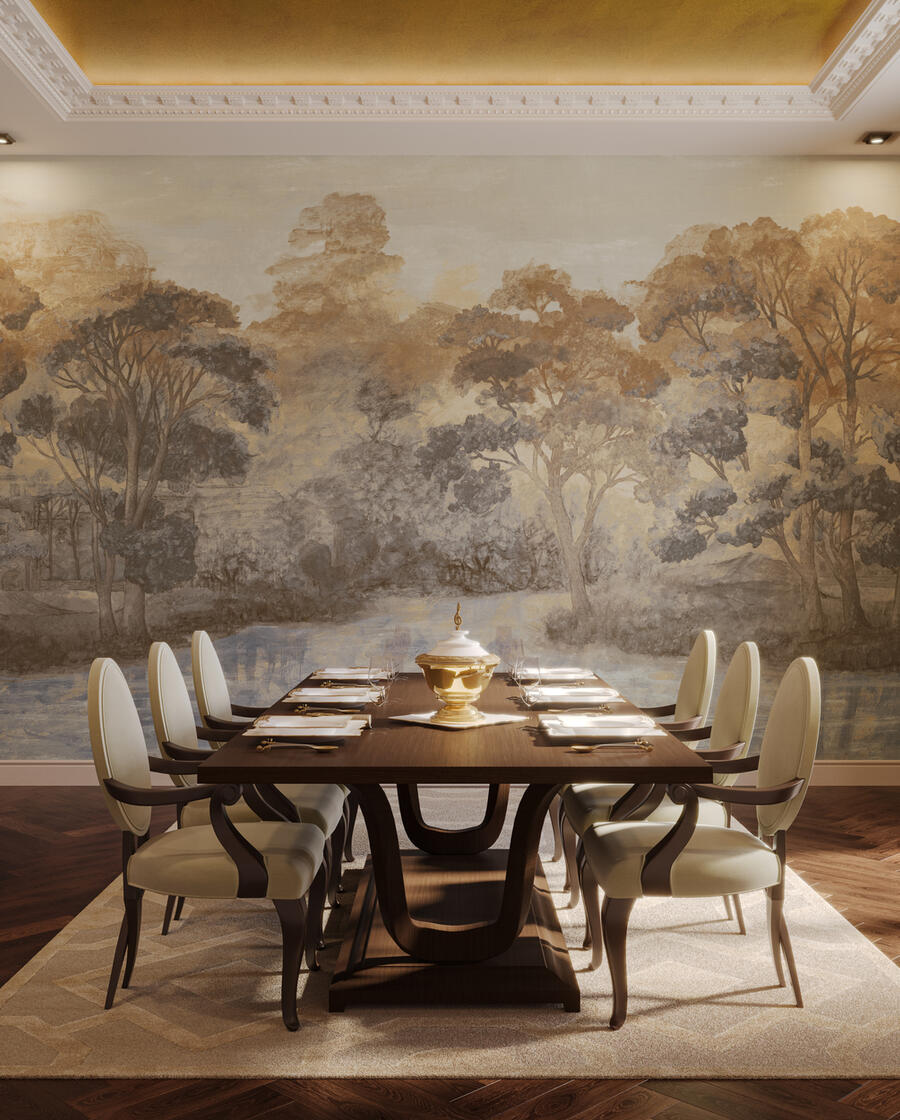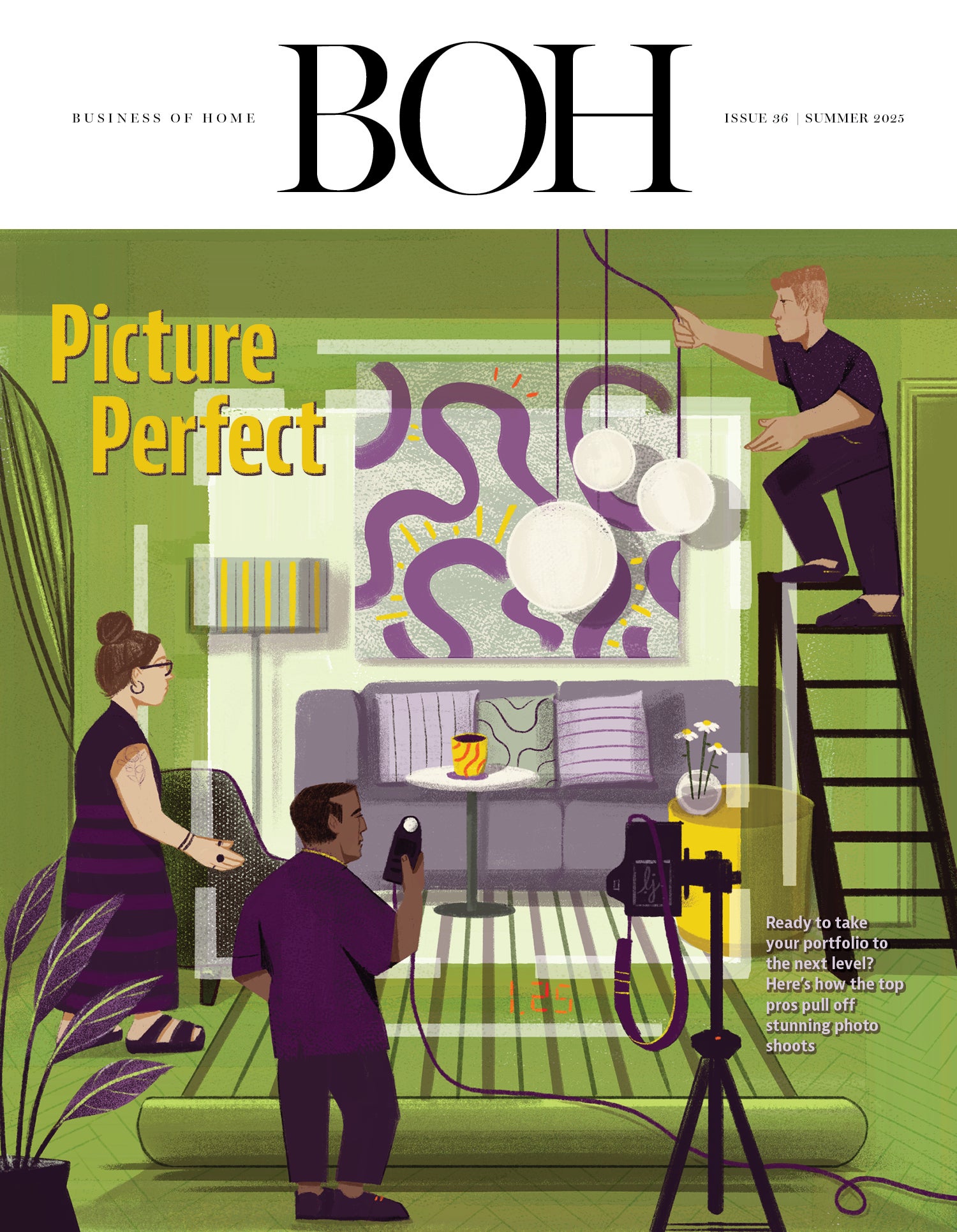Trade turmoil has dominated the headlines this year, throwing any number of U.S. alliances into a state of uncertainty—and yet, at least in the design industry, British-American relations have never been better. American designers are heading across the pond in droves for U.K. products, and in turn, British brands are doubling down on their efforts to infiltrate the American market, with a spate of recent events aiding in those endeavors.
Just this week (September 24 and 25), for example, Design Social—an event connecting interior designers with boutique home brands in a rotating series of U.S. cities—planted a flag overseas for the first time. Founder Brooks Morrison said choosing London as the site of the pop-up’s international debut was a no-brainer. In addition to local designers, a broad swath of American ones are coming along for the ride. Finding participating brands, meanwhile, was also an easy task.
“The U.K. is [smaller] than the U.S., and it doesn’t have [50 states] like we do, so there’s a finite amount of showrooms,” says Morrison. “There’s a proliferation of brands across the board, and there’s [only so much space] in a showroom, so this is how they can connect and support and stand out.”
Getting American designers to cross the ocean to foster those connections with their suppliers is increasingly a piece of cake. The success of Design Destination London, which held its second iteration in January, is a testament to the phenomenon. The event invites American designers and architects to explore the city’s brands and makers—and attendance keeps climbing, according to Lauren Hudson, president and CEO of The Wells Companies. She established the event in 2023 to help her clients connect with the British brands she represents, and her Houston-based company continues to sponsor the expanded exhibition, which has surged from 100 participating designers the first year to nearly 250 this year. More than 350 designers have already signed on to attend the 2026 show. “Having access to the American market is critical to the growth of English businesses—frankly, it’s where the largest market share is, so figuring out how to penetrate the American market is really important,” says Hudson.
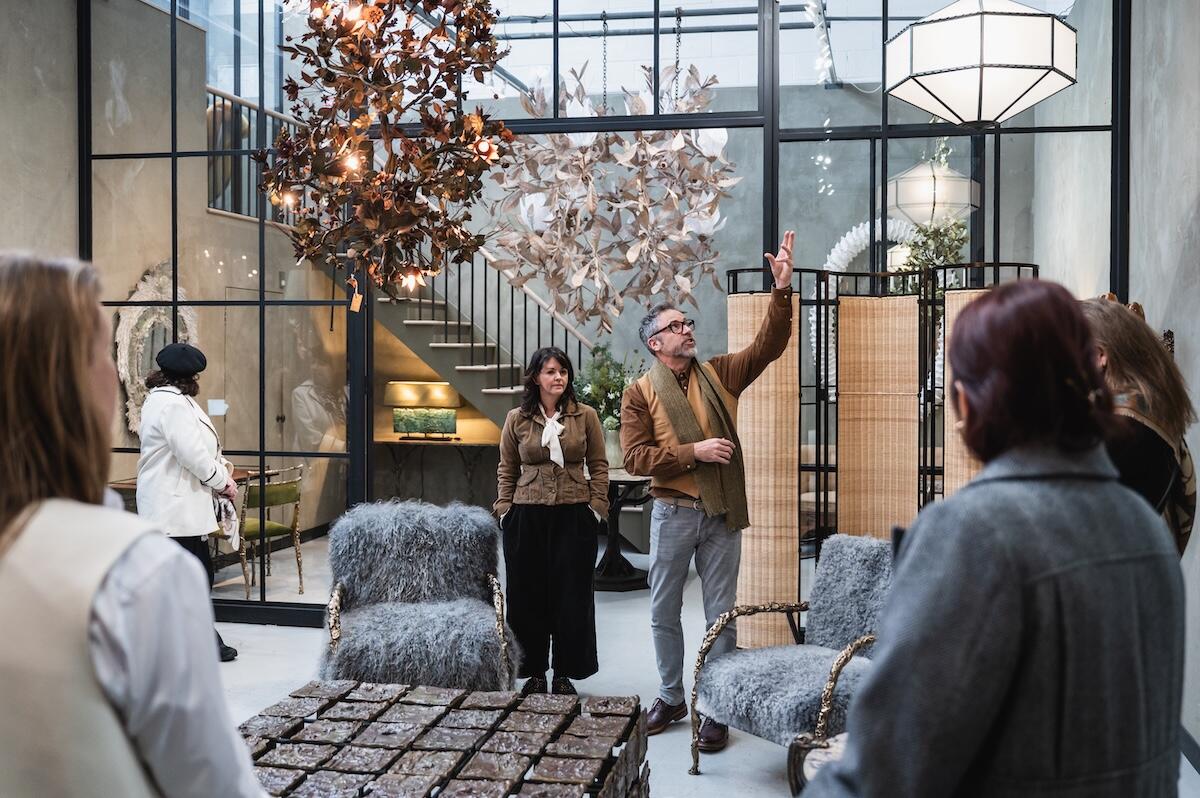
A new event called Dovetail, taking place next month in New York, is also working to make that process easier—in this case, by bringing a unified front of U.K. design brands to the American market. Hosted in partnership with the city’s British Consulate, the exhibition, which runs from October 14 to 30, will see a network of showrooms and spaces host presentations and open houses celebrating British design.
“We’ve seen what happens when brands work collectively, so we wanted to tap into that, and that’s exciting because it’s about community and conveying a shared vision,” says Dovetail curator Sabine Rothman.
If these gatherings prove anything, it’s that there’s opportunity for British brands in the American market. But how best to infiltrate it?
Land of Opportunity
It’s no secret that commercial opportunities abound in the U.S.—and for no sector is that more true than design, particularly for the companies serving luxury interior designers and their high-net-worth clients. “We operate in a very fine niche at the top, and the U.S. is the place that meets that niche in multiple cities, compared to anywhere else in the world,” says Tim Butcher, co-founder of London-based hand-painted wallpaper brand Fromental. “In the U.K., London is the focus. In Europe, we have Paris and Milan. In the U.S., when we approach the same [clientele demographic], we have New York, L.A., San Francisco, Dallas, Houston, Palm Beach, Miami, Atlanta, Chicago.”
Drill down into those markets, and the projects themselves also tend to represent more lucrative opportunities within the high-end realm. “People build new houses in the States more than they do here,” says Emma Finch, director of lighting brand Hector Finch, which is based in England’s West Midlands region. “[In the U.K.], people will remodel a house, or put an extension on—[and when] people do build houses here, they aren’t the great big mansions being built in America. It’s just a land of opportunity.”
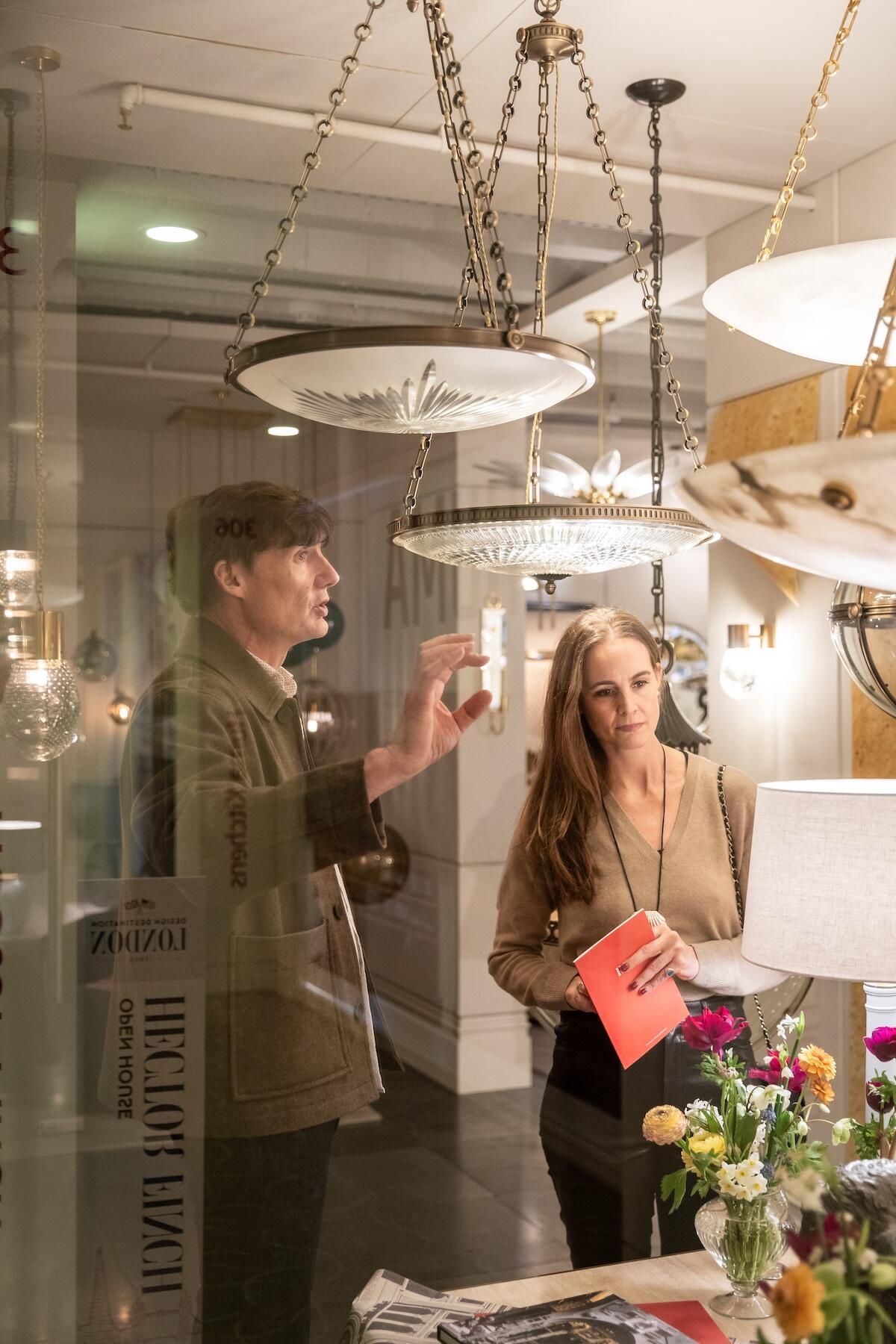
On the flip side, that vastness also presents a number of challenges. Especially for a smaller luxury brand, approaching the breadth of the U.S. market can be a daunting task. When British lighting brand Pooky set out to conquer the American market, the president of the company’s U.S. division, Regan Iglesia, said an incremental approach was key—and that New York was the perfect starting point. A yearlong pop-up at ABC Carpet & Home in Manhattan set the groundwork for a more permanent presence in the city, which came when the brand debuted a showroom in the New York Design Center earlier this month.
“We’re going to take each part of the country in segments, and do all the things that we think have brought success, like we did in New York, in the Northeast region,” says Iglesia. “Everyone sort of defaults to New York when you’re trying to attack the whole country. One thing we did know was that if we tried to go after the whole U.S. of A. [all at once], it [would] dilute our dollars and our efforts.”
Expectations, some British brands have come to learn, are also high in the American design market—a further incentive to put down roots. “The U.S. is very well set up in the design industry—design centers, fabulous multiline showrooms—and there’s an expectation, if you want to do business, that you’ve got to be responsive, you’ve got to have the samples to hand out, and you’ve got to provide the level of support and service expected in a market where there’s a really solid showroom business,” says Butcher. The challenges of maintaining accessible, always-on presence while working from another time zone was a contributing factor to Fromental opening its own NYDC flagship.
Like Pooky, Soane Britain established a foundation in the States before going all in on a permanent outpost. The brand had been in the American market since its founding in 1997, says managing director Lucy Whitfield—its first client was none other than Ralph Lauren. But the company started by establishing a network of sales teams throughout the country to visit design and architecture firms and present its designs. It wasn’t until 2023 that the brand debuted its first U.S. flagship on Madison Avenue.
“There’s definitely a market for British design, but it doesn’t have to be about a big showroom,” says Whitfield. “It can just be building relationships with key designers whose aesthetic suits your product: building relationships, getting on a plane, finding out what they’re up to, then getting the logistics right.”
That’s where events like Design Destination London, Design Social and Dovetail come in. Forging those initial connections between brands and designers is a crucial first step to making inroads in the American market, says James Lentaigne, creative director of British luxury bathroom brand Drummonds. The company broke into the U.S. with a showroom in New York’s A&D Building eight years ago, which debuted only after the brand had white-labeled its product through companies like Waterworks to build a demand among the American audience. He sees these events as an integral way to establish a sense of familiarity, opening the door for the next generation of brands—which is part of the reason Drummonds approached the British Consulate about the possibility of collaborating on an event like Dovetail in the first place.
“As the brands are better known in America, there’s more confidence to be able to buy into them,” says Lentaigne, who saw how exhibitions had raised the stateside profiles of international design destinations like Italy and France. “As the designers become aware of these brands, it helps give a sense of opening up a door to more choices in America than they have had, or enjoying the British designs that work well in the market.”
The Art of Translation
From a style perspective, selling British products in the U.S. has sometimes required a minor recalibration. Color is one of the biggest sticking points: When introducing Fromental’s products in Texas, for example, Butcher received a surprising piece of feedback: that its colors were “sad.”
“I’m looking at it in London, like, ‘No, this is really good!’ and then I go to Texas and I meet the client, and I’m like, ‘My God, it is [sad-looking here],’” says Butcher. “The light is so different, the scale of rooms is different … I found when working in the U.S. that the light significantly changes the way things appear.” Color preferences also vary from region to region—in Florida, for example, Butcher found that his clients favor a more vibrant palette.
For Drummonds, the larger size of American homes has created an opportunity. “We’ve customized some bathtubs for the U.S. customers that are enormous—almost like swimming pools,” says Lentaigne. “So we’ve done some bigger and better things for the customer when required.” Other times, the product tweak is less aesthetic and more technical: The company had to adjust its plumbing product to meet local code compliances and federal regulations for water conservation.
Similarly, Pooky had to undergo a process of adapting its lighting products for U.S. voltage requirements and electrical wiring standards. When it came to testing out aesthetics on the American market, the company began by introducing roughly half of its then-3,000-SKU assortment, to ensure that consumers would respond positively before diving in. A welcome reception also soon led to new opportunities: After experiencing unexpected success in the American commercial market, this spring the brand was able to launch a new division called Pooky Projects, focused on hospitality customers—a new channel for the company.
Other British brands, too, have discovered that despite some differences in aesthetic preferences (“If I go into the warehouse and see a chair with leopard print, I know it’s going to the U.S.,” says Whitfield), American consumers have embraced their collections without alteration. The Soane team, for example, has left its collection largely unchanged when selling to the American audience. Instead, many British companies focus their efforts on ensuring that their products make the transatlantic voyage safely.
“What happens to metal finishes when they spend a week on the ocean?” says Emma Finch. “How do we get our client shipments through customs safely, without any hidden surprises? It’s the logistical, operational side that we have to get 100 percent right for our clients. It’s a big investment buying from British brands, and we have to make sure that our orders arrive exactly how a client is expecting them.”
At the same time, it’s hard to mention logistics without touching on the impact new trade policies have had on the interplay between the British and American design sectors. Many brands have experienced a sales slowdown in recent months; for some, the administrative headaches of changing tariff policies have even hindered further expansion in the U.S. However, at least for now, the demand for English goods appears to be outlasting any market upset.
.jpg)
“It does ultimately put a premium on the cost of buying English and European brands, because not only do you have to pay higher delivery fees for the shipping and everything else, but the tariff really ratchets up the overall cost of buying English goods or European goods,” says Hudson. “That could end up being a problem for some. Others want what they want—and they’re willing to pay for it.”
The Feeling is Mutual
A love of British design—and particularly, the relationship-driven way business tends to be conducted in the U.K. design community—served as the starting point for Hudson’s U.S. showrooms after her first visit to London in 2016. Over the years, she’s seen a rising interest in the English aesthetic among Americans, which she attributes to a growing desire for coziness and connection.
“You think about the Cotswolds, a London flat, a country house—you check all the boxes,” says Hudson. “You’ve got the crackling fires. You’ve got the beautiful, plushy furniture. You’ve got a connection to history, the beautiful antiques. It provides comfort for those in the space.”
In a similar vein, Morrison—whose Design Social series prizes independent makers—saw England as a place where the concept that’s at the heart of her organization would resonate. “That’s always been the core of a lot of British brands, [whether] it’s fabric, textiles, hardware, lighting—the respect for craftsmanship,” she says. “Handiwork has been part of their maker culture from the beginning.”
Leaning into that respect for artisanship, Soane recently launched a residency program at its New York flagship, which will see the brand bring British craftspeople over to the U.S. to showcase their skills and artistry for the American audience. The initiative began last year with an expert weaver, and will continue with a program focused on saddlery and leather-stitched designs.
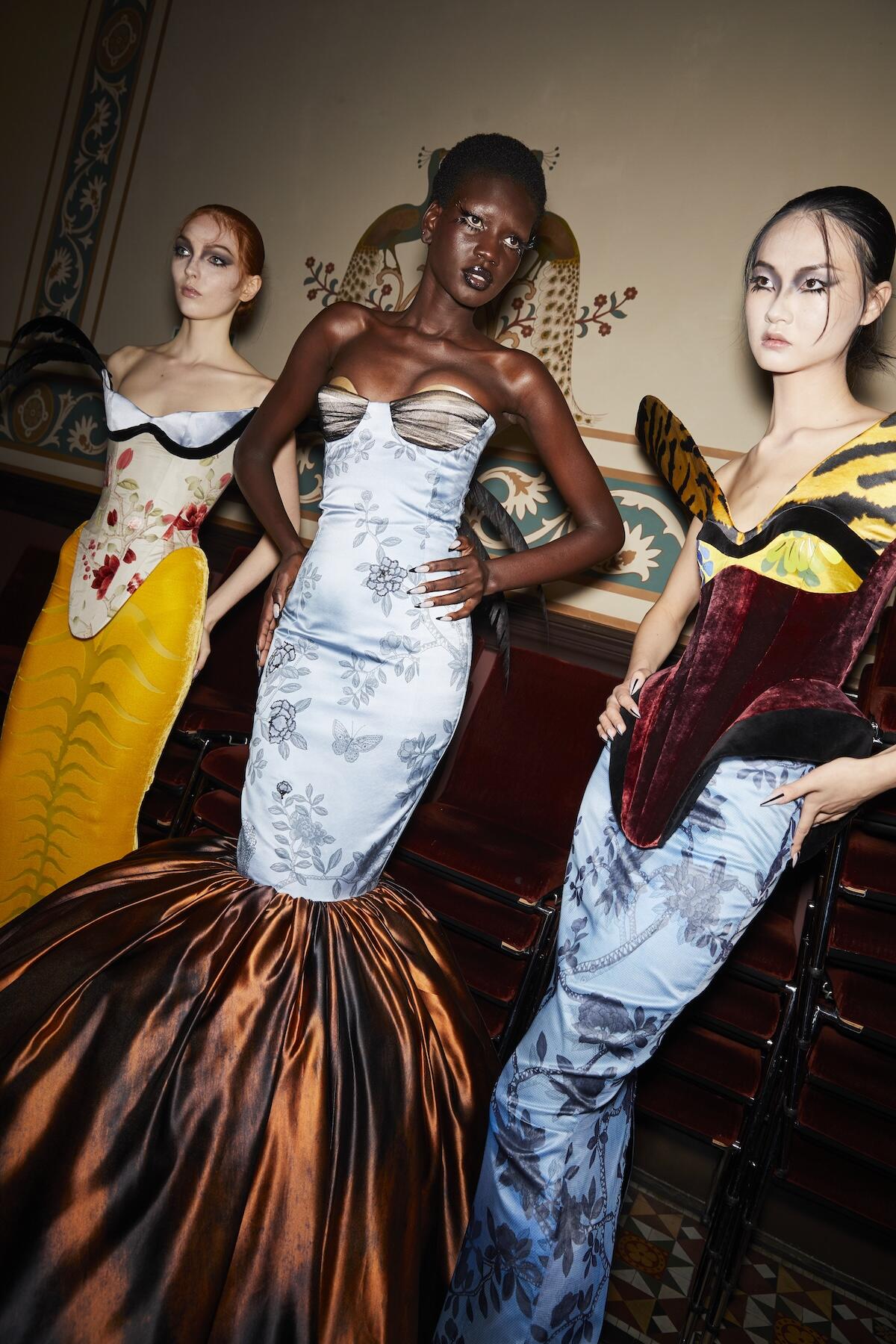
In the broad, competitive U.S. design market, it has become increasingly important for smaller British brands to discover innovative ways of making their mark. When actress Demi Moore showed up at last year’s Met Gala wearing a gown that fashion designer Harris Reed created using an archival Fromental design, it led to an unexpected burst of attention for the British brand. So, the company capitalized on it: It collaborated with Reed on his latest spring and summer collections and an upcoming wallpaper assortment.
“As a niche high-craft British brand, if we can tell the story [of our heritage] through the megaphone of a couturier walking out onto the Met Gala, it goes straight into the ear of the key clients we want, who are the tastemakers on the design side, and their end user, who is moving in those circles,” says Butcher.
The reward for those efforts is a cohort of American designers willing to take big swings and make bold choices with their newly acquired British wares—leading to a movement that seems to lift up both design communities at once.
“I personally love working in the U.S. [because there’s] a curiosity and an openness about doing new things in design, which sustains,” says Butcher. “Kati Curtis, Redd Kaihoi, Jon Brent, Katie Ridder, Young Huh … That’s [part of why] I want to do more business in America. I think there’s a vibrancy and excitement in what designers do, which I find inspiring.”



